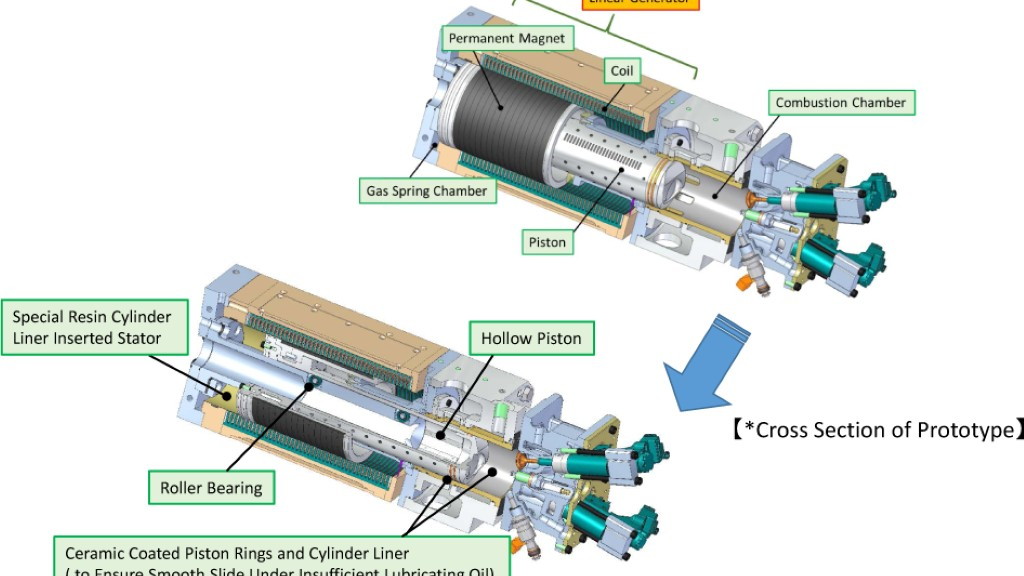However, conventional gasoline engines like that found in the Chevrolet Volt are compromised by design: the 1.4-liter unit has been adapted from a regular engine, rather than purpose-built for the installation. If you were to come up with something original, tailored to the application, you might envision something like Toyota's Free Piston Engine Linear Generator (FPEG). It's smaller, lighter and generates electricity more efficiently than its more conventional equivalents.
Essentially, a linear engine has no crankshaft, nor connecting rods. In their place is a gas-filled chamber, the compression of which acts as a spring, returning the piston after the expansion and combustion phases of a typical combustion cycle. The clever part is in turning this back-and-forth motion into energy, when you haven't got a crankshaft and the mechanically-useful rotation it produces.
As Green Car Congress writes (via Green Car Reports), Toyota's FPEG uses a W-shaped piston. In the center of the 'W', is the piston, sitting in its combustion chamber. This operates on a two-stroke cycle: burned gas is scavenged through a port in the cylinder head, as fresh air is drawn in through a port in the side walls, ready to be mixed with direct-injected fuel and ignited. Below the piston, the gas-filled chamber helps send the piston on its return journey.
The outer layer of the W-shaped piston--the outer arms of the 'W' shape--features a neodymium-iron-boron magnet. The walls of this chamber--outside the actual combustion chamber--are surrounded by a wire coil. The constant movement of magnets past the coil generates electric charge to feed the battery. The unit isn't powerful--10 kW equates to about 13 horsepower--but just two of them produce enough charge to let a Yaris or Corolla-sized electric vehicle cruise at 75 mph on the highway.
Using two, ideally in an opposed formation, also offsets any vibration issues that might be caused by a piston moving rapidly back and forth. The characteristics of the engine can be changed depending on requirements, too, since a pressure regulating valve in the gas-filled chamber adjusts the stiffness of the "spring". It's still at the prototype stage--shown off at the recent SAE World Congress in Detroit--but could be the ideal solution for future range-extended applications.
_______________________________________
Follow Motor Authority on Facebook, Twitter, and Google+



